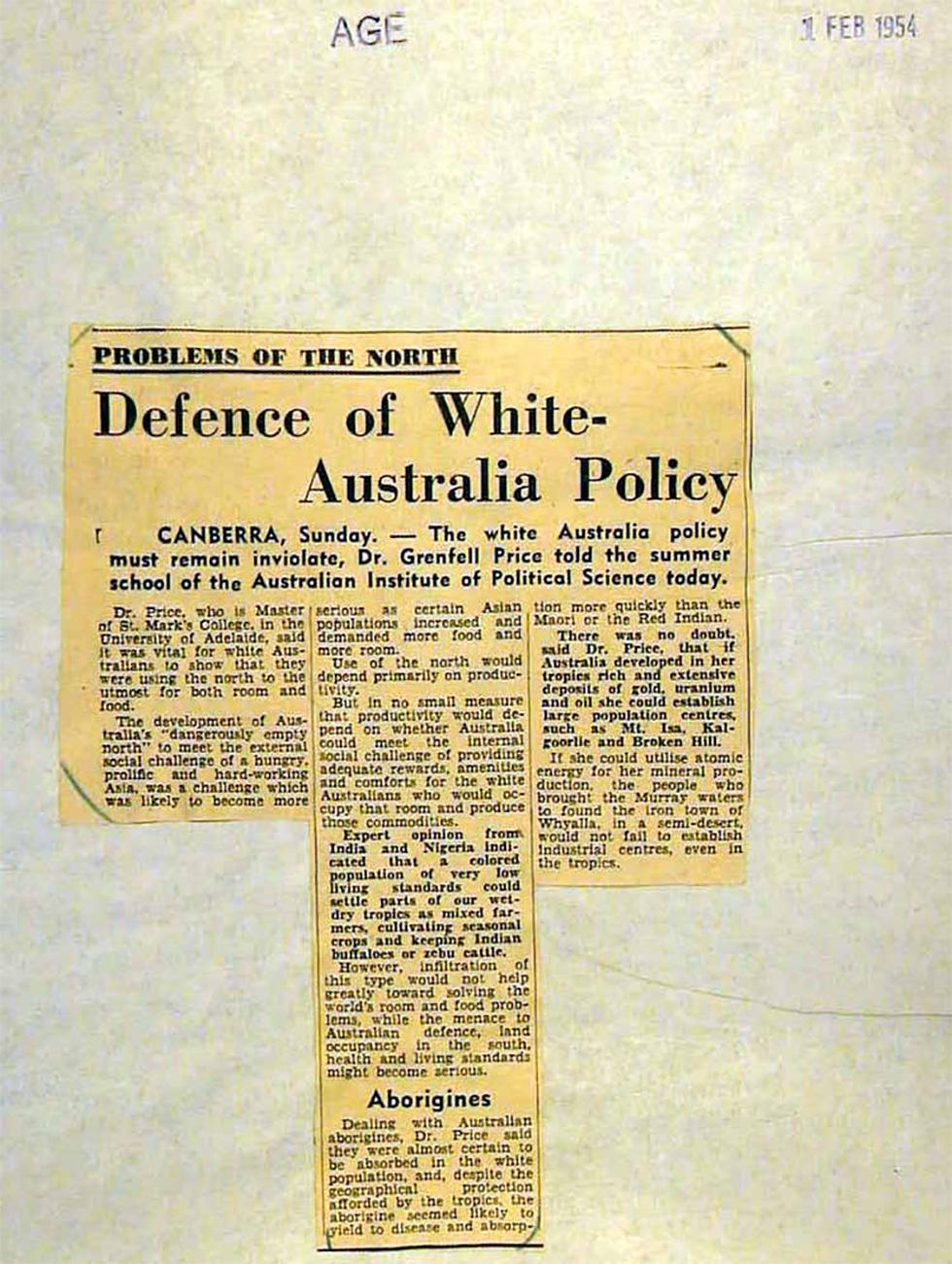
A newspaper article written in defence of the White Australia policy by academic Dr Grenfell Price.
Aboriginal and Torres Strait Islander people should be aware that the National Archives' website and collection contain the names, images and voices of people who have died.
Some records include terms and views that are not appropriate today. They reflect the period in which they were created and are not the views of the National Archives.


A newspaper article written in defence of the White Australia policy by academic Dr Grenfell Price.
[A newspaper clipping glued to a piece of blank paper. The paper has been stamped in purple ink 'AGE' and '1 FEB 1954'.]
[Underlined] PROBLEMS OF THE NORTH
[Heading] Defence of White-Australia Policy
[Large text] CANBERRA, Sunday. – The white Australia policy must remain inviolate, Dr Grenfell Price told the summer school of the Australian Institute of Political Science today. [end large text]
Dr. Price, who is Master of St. Mark’s College, in the University of Adelaide, said it was vital for white Australians to show that they were using the north to the utmost for both room and food.
The development of Australia's "dangerously empty north" to met the external social challenge of a hungry, prolific and hard-working Asia, was a challenge which was likely to become more serious as certain Asian populations increased and demanded more food and more room.
Use of the north would depend primarily on productivity.
But in no small measure that productivity would depend on whether Australia could meet the internal social challenge of providing adequate rewards, amenities and comforts for the white Australians who would occupy that room and produce those commodities.
[Bold] Expert opinion from India and Nigeria indicated that a colored population of very low living standards could settle parts of our wet-dry tropics as mixed farmers, cultivating seasonal crops and keeping Indian buffaloes or zebu cattle. [end bold.]
However, infiltration of this type would not help greatly toward solving the world’s room and food problems, while the menace to Australian defence, land occupancy in the south, health and living standards might become serious.
[Subheading] Aborigines
Dealing with Australian aborigines, Dr. Price said they were almost certain to be absorbed in the white population, and, despite the geographical protection afforded by the tropics, the aborigine seemed likely to yield to disease and absorption more quickly than the Maori or the Red Indian.
[Bold] There was no doubt, said Dr. Price, that if Australia developed in her tropics rich and extensive despoils of fold, uranium and oil she could establish large population centres, such as Mt. Isa, Kalgoorlie and Broken Hill. [end bold.]
If she could utilise atomic energy for her mineral production, the people who brought the Murray waters to found the iron town of Whyalla, in a semi-desert, would not fail to establish industrial centres, even in the tropics.
Learn how to interpret primary sources, use our collection and more.
